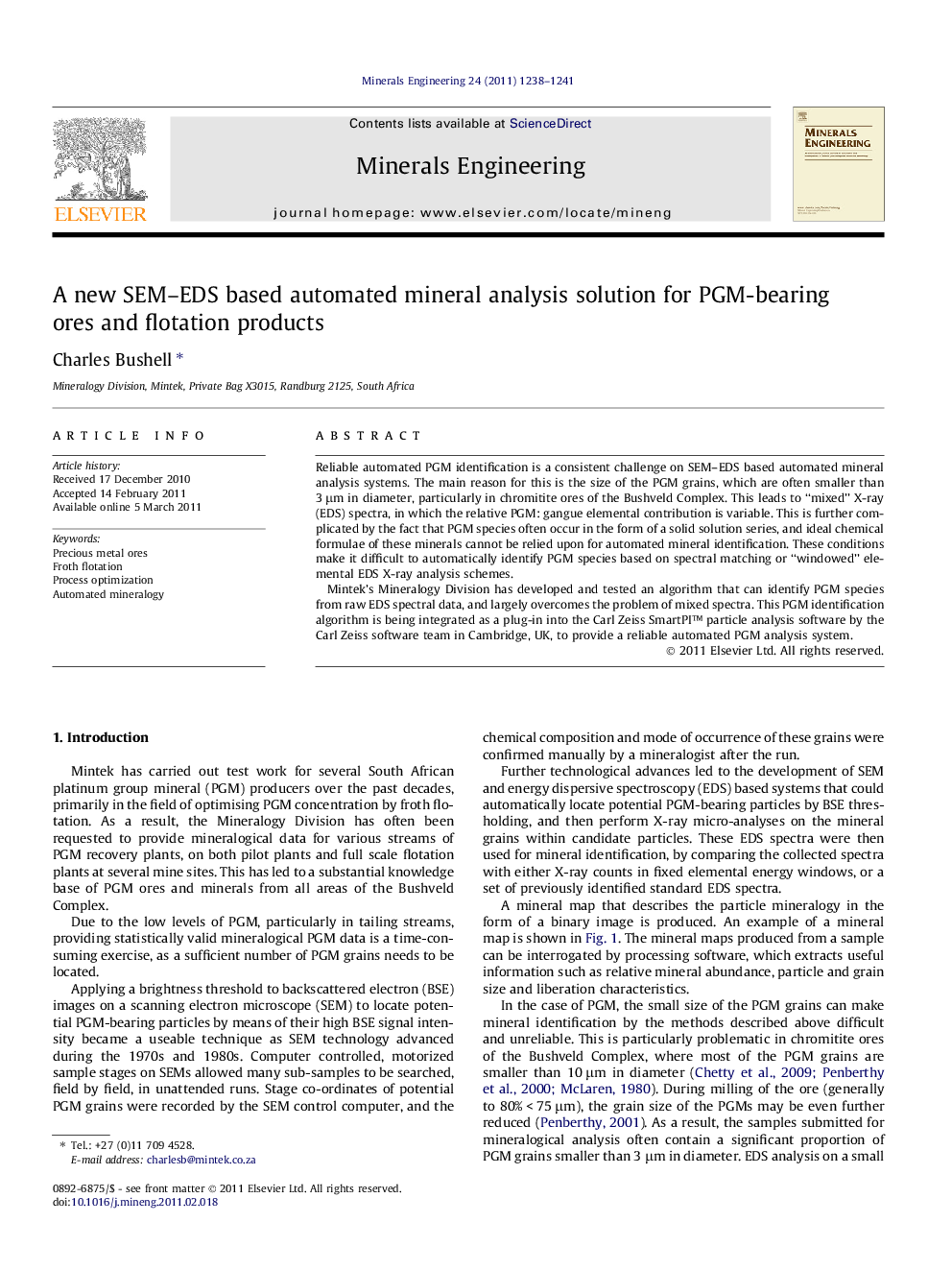| Article ID | Journal | Published Year | Pages | File Type |
|---|---|---|---|---|
| 233899 | Minerals Engineering | 2011 | 4 Pages |
Reliable automated PGM identification is a consistent challenge on SEM–EDS based automated mineral analysis systems. The main reason for this is the size of the PGM grains, which are often smaller than 3 μm in diameter, particularly in chromitite ores of the Bushveld Complex. This leads to “mixed” X-ray (EDS) spectra, in which the relative PGM: gangue elemental contribution is variable. This is further complicated by the fact that PGM species often occur in the form of a solid solution series, and ideal chemical formulae of these minerals cannot be relied upon for automated mineral identification. These conditions make it difficult to automatically identify PGM species based on spectral matching or “windowed” elemental EDS X-ray analysis schemes.Mintek’s Mineralogy Division has developed and tested an algorithm that can identify PGM species from raw EDS spectral data, and largely overcomes the problem of mixed spectra. This PGM identification algorithm is being integrated as a plug-in into the Carl Zeiss SmartPI™ particle analysis software by the Carl Zeiss software team in Cambridge, UK, to provide a reliable automated PGM analysis system.
Research highlights► An algorithm that reliably identifies platinum group minerals (PGM) was developed. ► Misidentification of sub-3 μm PGM due to mixed EDS spectra has been addressed. ► Misidentification of PGM due to variable solid solution series has been addressed. ► Useful metallurgical data can be produced from automated mineralogical analyses. ► PGM recovery can be predicted from mineralogical data.
